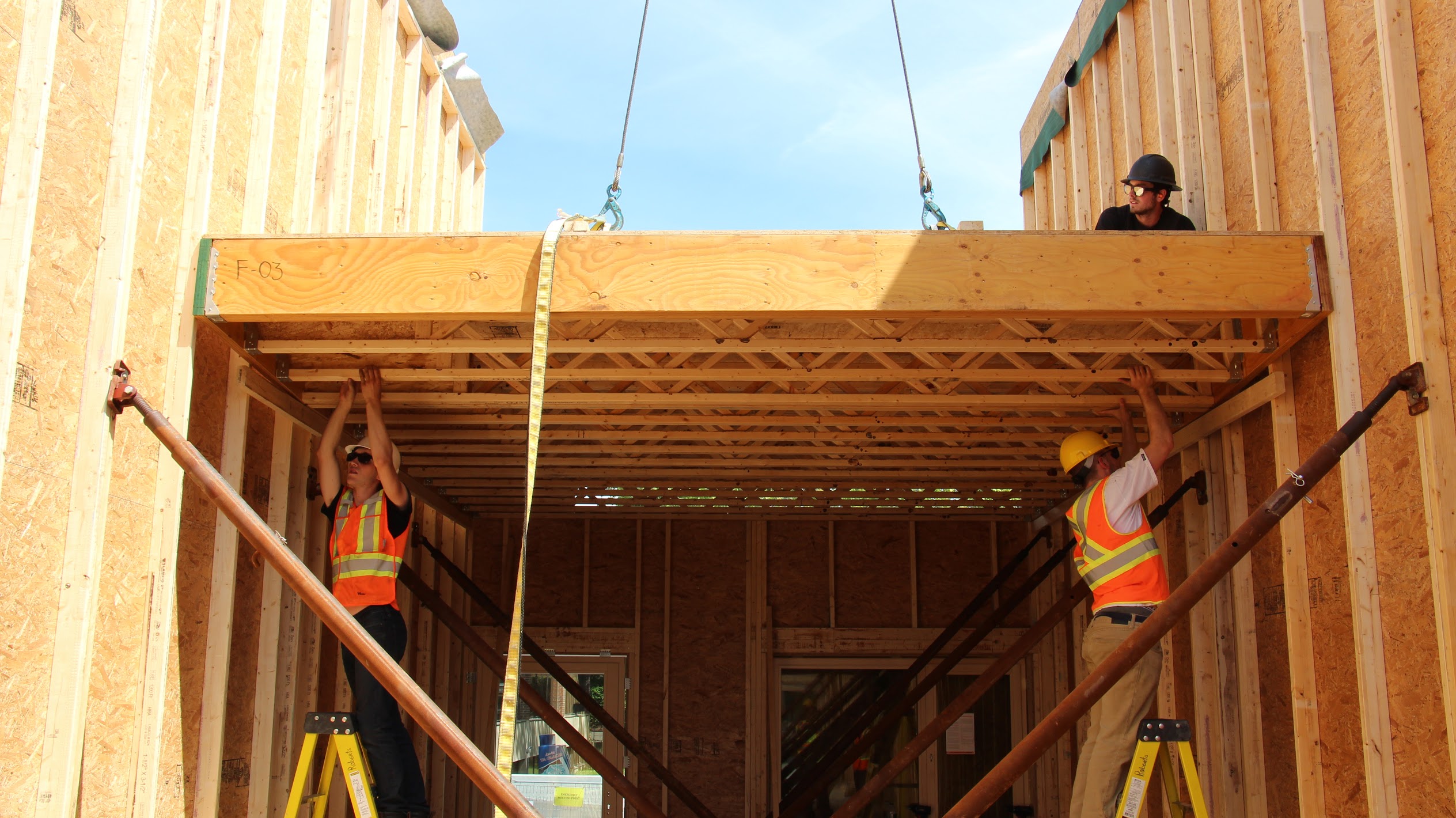TeamMTL gets financial support from Hydro-Québec, will participate in 2018 Solar Decathlon
TeamMTL, a group of students from Concordia and McGill, received $250,000 in funding from Hydro-Québec on Aug. 29 to go towards building an energy-efficient, solar-powered house. The company’s contribution and expertise will help the students finish their project in time for the 2018 Solar Decathlon.
It was TeamMTL’s originality that allowed them to join the competition. The students from Montreal universities built a home with a style typical to the city’s architecture: a row house, where adjacent homes share a common wall. The construction of the house began on June 1 at Concordia’s Loyola campus.
The Solar Decathlon, which was launched by the U.S. Department of Energy in 2002, had never seen a similar project and made an exception for the team to join the competition. Houses in the Solar Decathlon, according to Bruno Lee, an assistant professor in Concordia’s faculty of engineering, are usually single-detached.
Lee, who is responsible for overseeing the engineering side of the project, told The Concordian that TeamMTL’s first design was presented to the organizers last January, and they were “very open and liked the idea.”
Despite deciding on a row house, the students still managed to build a net-zero home, meaning it will be self-sufficient, using as much energy as it creates.
Lee said row houses are energy-efficient because they allow neighbours to share heating and cooling with one another. “For some people, it’s quite cold today,” he said. “They might need heating, but for some people, they still need cooling. [With a row house], I can shift around the heat.”
Lee said he believes the concept of energy shifting—extracting energy from one area to move it to another—can apply to a row of houses but can also happen within the same building.
The Concordia professor said TeamMTL was able to accomplish energy-efficiency by moving energy from the side of the house facing the sun, where there’s a heat gain, to the colder north side, because of the row house’s two thermo tanks.
Energy shifting, according to Lee, would allow Hydro-Québec to better manage its supply. He explained the crown corporation has a peak in energy use during winter and can’t keep up with the demand, whereas they have a surplus of energy in other parts of the year.
The 2018 edition of the Solar Decathlon will take place between July and October in Dezhou, China where engineers built the largest solar structure in the world in 2012: the Sun-Moon Mansion.
TeamMTL is currently composed of students from Concordia’s engineering and fine arts programs, as well as students from McGill’s architecture program, led by McGill associate professor Michael Jemtrud. There were 90 students on the team when it was first formed last September but, according to Lee, that number has since dropped to 30 active members.
Like Olympic decathlons, there are 10 different aspects on which teams will be evaluated in this solar challenge. Some aspects, such as the house’s architecture, market potential and engineering, will be assessed by professionals. Other features, such as the building’s energy consumption and its use of water, will be evaluated based on specific criteria. Each aspect allots a team a maximum of 100 points.
Last April, the Montreal-based team also received a $50,000 grant from Canada’s Ministry of Environment and Climate Change.
Photo courtesy of TeamMTL




